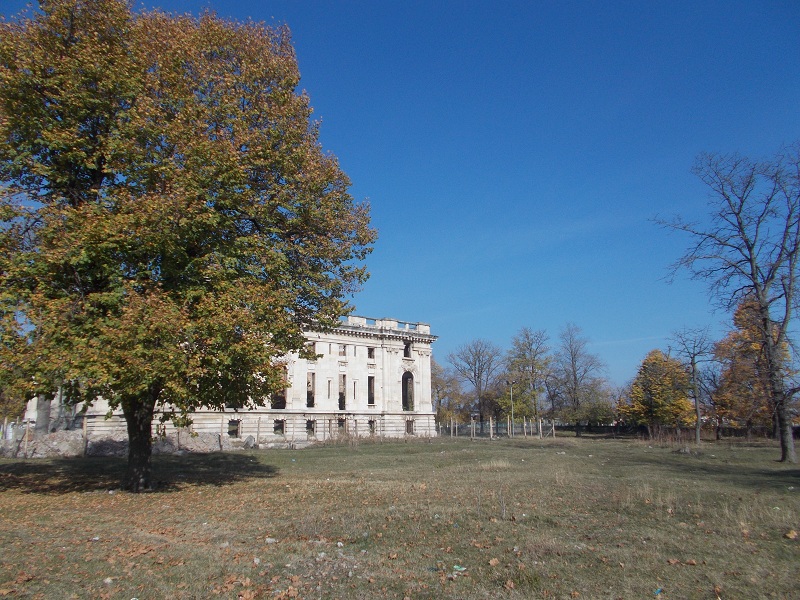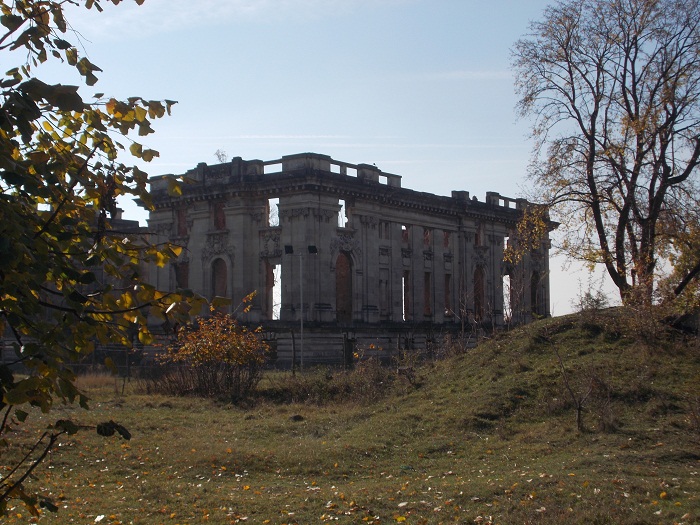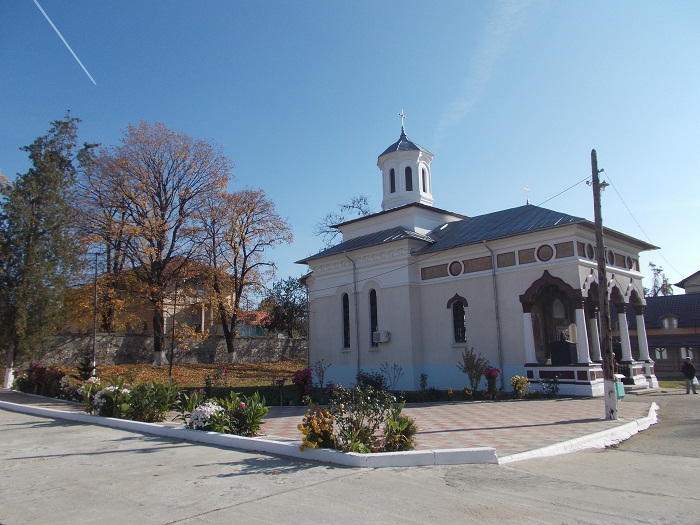Travel Planner: The Little Trianon Palace in Floresti – a symbol of Romanian disregard for history
 The last week passed with some ups and downs and on Sunday I decided to get out of Bucharest to breathe fresh air, to again see the amazing colors of the autumn and to visit another place full of history. My choice was the Cantacuzino architectural complex from Floresti Prahova, I had read about the history of this monument and having a great respect for the Cantacuzino aristocratic family, I drove almost 80 kilometers from Bucharest to Floresti / Prahova.
The last week passed with some ups and downs and on Sunday I decided to get out of Bucharest to breathe fresh air, to again see the amazing colors of the autumn and to visit another place full of history. My choice was the Cantacuzino architectural complex from Floresti Prahova, I had read about the history of this monument and having a great respect for the Cantacuzino aristocratic family, I drove almost 80 kilometers from Bucharest to Floresti / Prahova.
The weather and the road itself helped me along and put me in a good mood. The village of Floresti is located in Prahova County nearby the oil field of the city of Baicoi. From Bucharest to Baicoi the DN1 road is quite good and in less than an hour and a half it's possible to reach the back-road from the DN1 to the village of Floresti. The first unpleasant moment was when I “felt” the back-road, but I told myself that this road isn’t better or worse than other roads in Romania and my car's German engineering can manage this inconvenience. Following the road I arrived after ten minutes in front of the Church of the Trinity and I parked there in the mud as I had no other solution.
First, I went in the garden of the church and was delighted to see the garden full of multicolored flowers and the white church. The church was built in 1887 on the site of an older church built by Grigore Cantacuzino between 1826 – 1830. The two icons at the entrance (Saint Paul and Saint Peter) are fresh and painted in amazing pastel colors and inside the church there are many interesting and well painted frescos. In the church the service was ongoing and I saw a lot of people listened to the priest’s smooth voice. I silently went out, trying not to disturb the congregation, who appeared in a contemplative mood.
I asked somebody how can I visit the palace named “The Little Trianon” and after few discrepant explanations as usual when the Romanians want to ‘help” you arrive at a specific location, I took the decision to leave my car and walk to the palace. The warm and fresh air, the clear blue skies and the sun's rays supported my good mood but… when I discovered the location named “The Little Trianon Palace “ (by the way, this is what drivers can seen advertised on the DN1) my good mood fled away instantly.
The history of this castle is very interesting and in many aspects reflects the history of the ancient Romanian aristocratic families.
The castle was built between 1911 and 1913 by the architect Ion Berindey (who built the Cantacuzino Palace in Bucharest on Calea Victoriei) on the order to Gheorghe Grigore Cantacuzino. The builders included highly skilled French workers who built an eclectic French style architectural complex, unique in Romania, where Rococo and the Neoclassical styles were mixed in very good proportions using, at the same time, the Mavros stlye. Building this palace, the team used all the technological developments from the time such as: beton arme, granite and the iron rail used for the first time by the famous Romanian engineer Anghel Saligny for the “The Charles I Bridge” in Cernavoda.
The Cantacuzino family is a princely family of Wallachia, Moldavia and Russia, a branch of the Kantakouzenous family descended from the Byzantine Emperor John VI Cantacuzenus. The Cantacuzino family had a very important role in the history and in the cultural life of the two Romanian principalities (Wallachia and Moldavia) and in the modern Romania

The palace was named at first as “The lady’s palace” but, due to its similarity with the Trianon Palace at Versailles, the name of the Cantacuzino palace was changed to “The Little Trianon”. Another particularity of this palace is the heraldic crest of the Cantacuzino family on the principal façade and the design of the windows in Albesti marble. In the garden of the palace the “Water Tower” was built, which is 30 meters high and very similar to the “Chindiei Tower” in the ancient medieval capital of the Wallachia, the city of Targoviste. In a very French style and as at Versailles, the palace complex had a very large and neat garden, a big water basin many stepped terraces down to the Prahova meadow. The palace included a 150 hectare arboretum which once had many exquisite flora species.
This palace is special not only for it eclectic and almost unusual architectural style in our country, but for its history, because degradation began soon after it was made. After George Grigore Cantacuzino’s unexpected death, his son Mihail neglected this little architectural jewel. In the First World War, the German troops stripped copper dome and the glazed tile stove and in 1940 the huge earthquake damaged the building further. After the Second World War, Russian troops destroyed another important part of this monument and, following nationalization in 1948 the entire property was used by the communist authorities as a dog training school and a tuberculosis hospital.
The earthquake in 1977 definitively destroyed the palace and especially after 1989 the stones and other remains of the palace were destroyed or stolen. So, one unique architectural complex, with a strange and sad history which once the general Von Paulus described as a priceless treasure: The little Trianon Palace more habitable and much more brilliant than the Paris original, was in its dotage.

Now, “The Little Trianon” Palace is a dreadful and horrible stone mountain of ruins and the garden is totally neglected, only the “Water Tower” is still in place. Its architectural value doesn’t matter, its history, its location in the Wine Valley, the surrounding natural beauties. It doesn’t appear to matter that in the early 20th century it was named one of the most wonderful palaces in Southern Romania, it doesn’t matter that it was built using the newest technology of that time, now our “Little Trianon” is a bundle of trash. I sadly remembered what George Enescu’s wife and George Grigore Cantacuzino’s daughter in law, Maria Tescanu Rosetti once wrote:
“ A real terrestrial paradise,….., rich colors, harmoniously divided : blooming flower beds, the intense green velvet of the smooth lawns, branching hornbeam, impeccably cut, brushwood full of fine smelling flowers, basins, and artistic fountains after the French fashion, classical lines on the long pathways, smooth with fine gravel, which recall the Gardens at Versailles, fresh in the mid August sunset, luminous villas and bright pavilions flamboyant with capuchins and pelargonium…”
Where are all these now? All lost in dust, carelessness, poverty and above all in our total disregard for our history and for the life and creations of the important Romanian aristocratic families. But the history of the place hasn't finished yet and if the Romanians aren't able to preserve their history, others can do it. I heard that a few foreign investors bought the place to restore it and to give back to the Romanians for a better understanding and respect of history and maybe for joy too.. I hope they have enough time, money and patience with our intricate bureaucracy and corruption. I would like to congratulate them and to wish them “Good luck!” !
By Mariana Ganea, Guest Writer
photo source: Mariana Ganea















